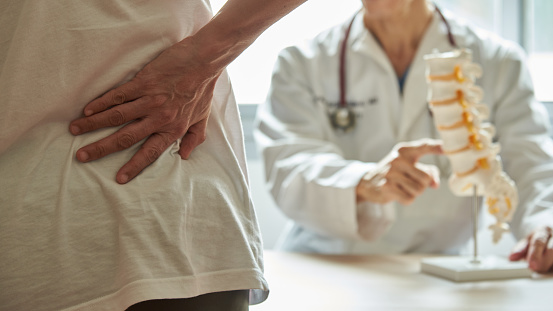The human body was designed to move as one fully integrated unit. The muscles connect with each other through patterns such as walking, running, and even throwing. When the muscles connect (talk) with each other, the body functions efficiently and compensations during movement are kept to a minimum. Poor movement compensations are the cause for most of the body’s aches and pains, and can be prevented by training the body the way it was designed.
If you want a fish to get better at swimming, you wouldn’t teach it to walk on land. The body of a fish is designed to swim, the same way the human body is designed to walk. Walking is a fundamental movement that every body utilizes at some point in their day. Whether you walk around the neighborhood, to and from your car, in the grocery store, or at the park, your muscles are engaging through reciprocal sequences (opposite limbs connecting) that allow it to propel itself through space. When exercise doesn’t account for reciprocation of body parts and the muscles get trained through isolated movements, it conditions the body to disconnect during basic human movements like walking. When the body is disconnected that’s when movement compensations arise, so every step you take, while you’re walking the dog around the block or walking into the gym, is a step that’s forcing your body out of its natural alignment. If you don’t do anything to remain aligned then every time you move, you’re telling your body that this misalignment is the new normal, and your body gets stuck in this position. In order to regain better alignment, you need to train your body the way it naturally moves, by engaging the myofascial sling system.
The body has a sling system that is interwoven in the myofascial network and those slings are responsible for connecting the upper body with the lower body, the same way they connect when you walk, run, or throw. (Yes your lower body is involved when you play fetch with your dog- if it’s not, then that’s a shoulder injury waiting to happen). The slings connect the right shoulder, through the external and internal obliques, to the left hip, and all the way down the front of that leg. Then around the bottom of the foot, back up the rear of the same leg, to the left glute. From the left glute, up across the spine towards the right lat, which then finishes back where it started, at the right shoulder. Then you have an identical sling connection connecting the left shoulder to the right hip. This is an in depth view of whats typically referred to as the body’s “X.” When you move, force is transmitted through the sling systems and balanced between the two sides so that you move efficiently. All of our muscles are encompassed in these slings so they’re working in harmony to balance out your movement. When muscles are isolated during exercise they stop working in harmony, so now the slings aren’t balanced the way they were designed. It’s like removing the lower left section of the “X,” it’s not going to be able to stand the way it was, instead it’s going to have to lean to one side to find balance. Our body works the same way, when the slings disconnect, you can still move, but you’re going to move with more imbalances.
If left untreated, muscular imbalances cause disturbances in your gait and shifting in your posture that contribute to joint pain and muscle aches. Since the body is no longer working optimally, the joints absorb the forces that the sling systems should be balancing. Imbalances in the sling systems cause some muscles to overwork to pick up the slack of the primary movers, leading to strains in those muscles. For example, if your hamstrings aren’t engaging when you walk, the calf usually picks up the load and since the calf wasn’t designed to handle all the responsibility it gets tired and the muscles in the bottom of your foot start to work by themselves. Hello plantar fasciitis. The same can be said of the lats and pecs not working in unison with the sling systems and being plagued with rotator cuff issues.
If you expect to live a pain free life and move freely, then exercise must account for reciprocal movements that engage the myofascial sling systems through Functional Patterns that mirror real life. Sitting on an exercise bike or a weight machine at the gym is good for your health, but it’s not preparing your body for life outside of the gym to the extent that sling training will. All exercise is better than no exercise, but not all exercise is created equal. Depending on what you want to get out of your time spent working out, evaluate what is going to be the most beneficial for your goals. Do you want to be really good at rowing or cycling for an hour but unable to run to save your life or do normal activities of daily living without experiencing aches or pains? It’s your life, build your body for how you want to live it.











